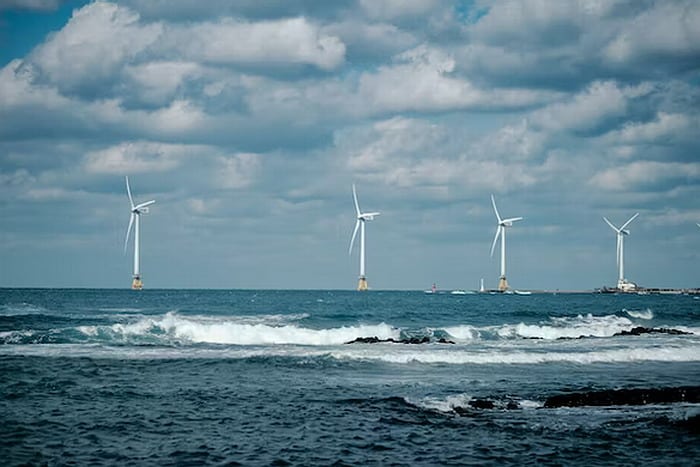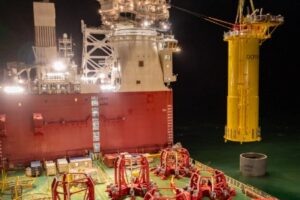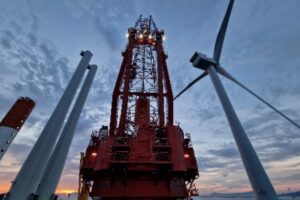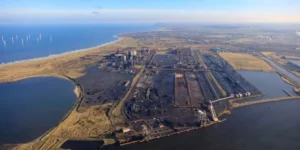What is the Environmental Impact of Wind Energy?

In the era of climate change and a growing awareness of our environmental impact, the quest for sustainable energy sources has taken center stage. Among the myriad alternatives, wind energy emerges as a formidable contender, promising clean and renewable power. As majestic wind turbines adorn landscapes, transforming breezes into electricity, it’s crucial to scrutinize the nuanced relationship between wind energy and the environment.
Let’s see what is the environmental impact of wind energy.
The Positives
Reduced Greenhouse Gas Emissions
Wind energy is celebrated for its role in reducing greenhouse gas emissions, a significant contributor to climate change. Unlike fossil fuel-based power generation, harnessing wind does not involve the combustion of fuels, resulting in lower carbon dioxide emissions and a reduced overall carbon footprint.
Land Use Efficiency
Wind turbines require relatively small land footprints compared to other forms of power generation. The land around wind turbines can still be utilized for agriculture or other purposes, contributing to a more efficient use of space.
Renewable Resource
Wind is a renewable and abundant resource, making it an attractive option for sustainable energy production. Unlike finite fossil fuel reserves, wind energy can be harnessed as long as the wind continues to blow, providing a perpetual and clean power source.
Low Water Usage
Wind energy has a minimal impact on water resources compared to traditional power plants, which often require substantial amounts of water for cooling. The water savings associated with wind energy make it an environmentally friendly option, particularly in regions facing water scarcity.
The Challenges
Bird and Bat Mortality
One of the notable challenges associated with wind energy is its impact on bird and bat populations. Collisions with rotating turbine blades can result in fatalities, prompting concerns about the potential ecological consequences, particularly for endangered species.
Noise Pollution
Wind turbines can generate noise, and while advancements in technology have led to quieter designs, noise pollution remains a concern for nearby residents. Proximity to residential areas may impact the quality of life for those living in the vicinity of wind farms.
Visual Impact and Aesthetic Concerns
The visual impact of wind farms on landscapes is a subjective concern that can affect local communities and tourism. Some argue that the presence of large turbines that alter the natural aesthetics of an area, leading to debates over the appropriate placement of wind farms.
Manufacturing and End-of-Life Disposal
The manufacturing and eventual decommissioning of wind turbines involve the use of materials and processes that carry environmental impacts. Additionally, the disposal of turbine blades poses challenges, as they are often made of composite materials that are difficult to recycle.
Intermittency and Energy Storage
Wind energy generation is intermittent, depending on wind availability. This intermittency poses challenges for grid stability and necessitates the development of effective energy storage solutions to ensure a consistent and reliable power supply.

Wind turbines installed on mountains away from civilization, image source: Unsplash
Mitigating the Impact
Technological Innovations
Ongoing research and development in wind turbine technology aim to address environmental concerns. This includes improvements in blade design to minimize bird and bat collisions, noise reduction technologies, and advancements in recyclable materials.
Strategic Site Selection
Careful site selection plays a crucial role in mitigating the environmental impact of wind energy. Identifying areas with minimal impact on wildlife, considering local aesthetics, and engaging with communities in the decision-making process are essential steps.
Wildlife Monitoring and Conservation
Implementing effective wildlife monitoring programs around wind farms can help assess and mitigate the impact on bird and bat populations. Conservation initiatives, such as habitat restoration, can also offset the environmental consequences.
Community Engagement
Engaging local communities in the planning and implementation of wind energy projects fosters a sense of ownership and ensures that the concerns and preferences of residents are considered.
Advancements in Wind Energy Technology: A Path to Environmental Harmony
Continuing efforts in research and technology hold the key to further minimizing the environmental impact of wind energy. Innovations in wind turbine design, materials, and operational strategies are shaping a future where the benefits of this renewable resource can be maximized while mitigating potential drawbacks.
Next-Generation Turbines
Ongoing advancements in turbine technology aim to make wind energy even more environmentally friendly. The development of larger and more efficient turbines can increase energy output while reducing the number of turbines needed, mitigating land use concerns.
Smart Grid Integration
The integration of wind energy into smart grids, combined with energy storage solutions, can help address the issue of intermittency. Smart grid technologies enable better management of energy distribution, ensuring a reliable and stable power supply even during periods of low wind.
Recyclable Materials and Sustainable Practices
The wind energy industry is actively exploring the use of recyclable and eco-friendly materials for turbine components. Additionally, adopting sustainable manufacturing and decommissioning practices can minimize the environmental footprint associated with the entire lifecycle of wind turbines.
Community-Based Wind Projects
Community-based wind projects, where local residents have a stake in the development and benefits of wind farms, are gaining traction. These projects not only enhance community engagement but also provide economic incentives and shared responsibility for environmental stewardship.
Wildlife-Friendly Design
Collaborative efforts between engineers, ecologists, and conservationists are driving the development of wildlife-friendly turbine designs. Innovations such as bladeless or slower-moving turbine technologies aim to reduce bird and bat collisions, addressing a significant environmental concern.

Bladeless wind turbines generate power without affecting wildlife, image source: YouTube
Global Collaboration and Knowledge Sharing
The global nature of environmental challenges calls for collaboration among countries, industries, and researchers. International initiatives for knowledge sharing and joint research efforts contribute to a more comprehensive understanding of the environmental impacts of wind energy and the development of effective mitigation strategies.
Policy Support for Sustainable Practices
Governments and regulatory bodies play a crucial role in shaping the trajectory of the wind energy industry. Implementing policies that incentivize sustainable practices, responsible site selection, and the adoption of environmentally friendly technologies can further enhance the positive impact of wind energy.
Looking Ahead: Striking the Balance
As the world continues to grapple with the urgent need for sustainable energy solutions, wind energy remains a beacon of hope. The environmental impact of wind energy, while presenting challenges, is being met with a proactive and innovative spirit. Through a combination of advanced technology, strategic planning, and global collaboration, the environmental footprint of wind energy can be minimized.
Striking the right balance between renewable energy development and environmental conservation requires a commitment to ongoing research, adaptive strategies, and a shared responsibility among stakeholders. The journey towards a sustainable energy future may be complex, but the promise of a cleaner and greener world makes it a journey worth taking. By harnessing the power of the wind responsibly, humanity can navigate towards a future where environmental harmony and energy security coexist.
Conclusion
Wind energy stands as a pivotal player in the transition toward a more sustainable and greener energy landscape. While its positive contributions in reducing greenhouse gas emissions and harnessing a renewable resource are undeniable, acknowledging and addressing the environmental challenges is crucial. Through ongoing research, technological innovation, and responsible deployment, the environmental impact of wind energy can be minimized, paving the way for a cleaner and more sustainable energy future. Balancing the benefits and challenges requires a comprehensive and collaborative approach that prioritizes both environmental conservation and the pressing need for renewable energy solutions.






